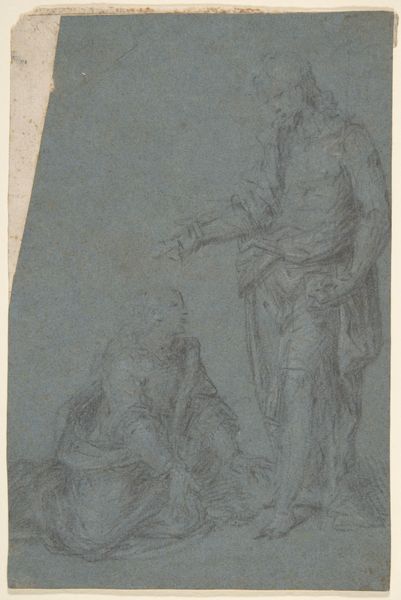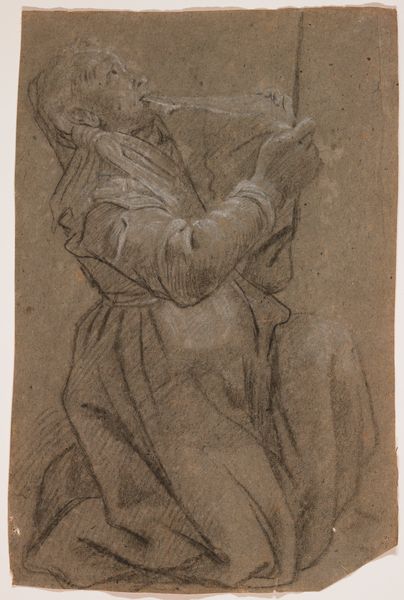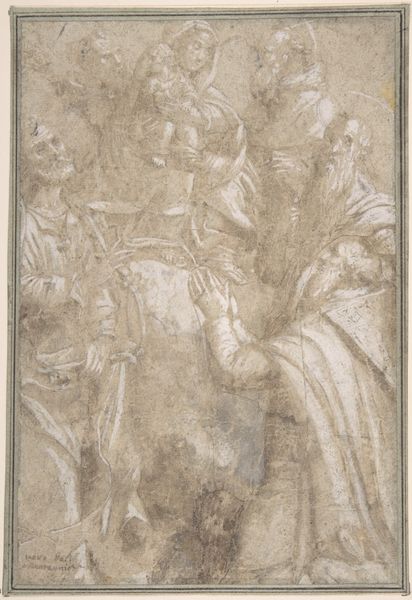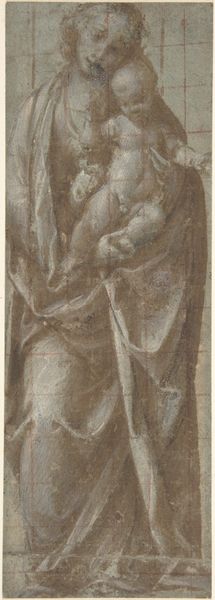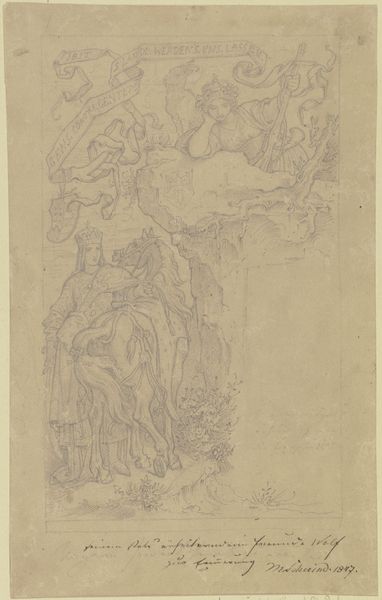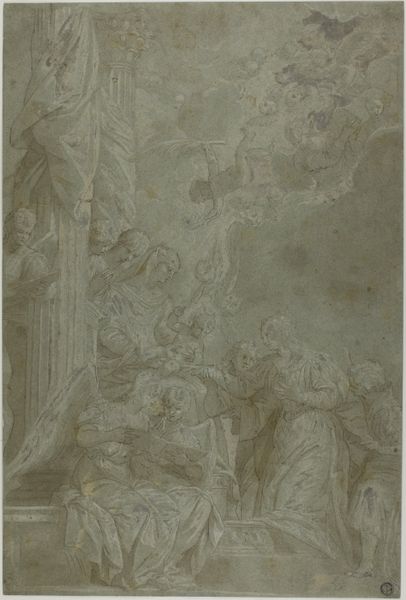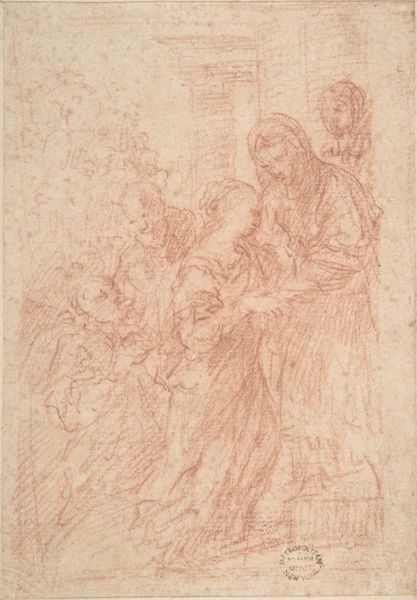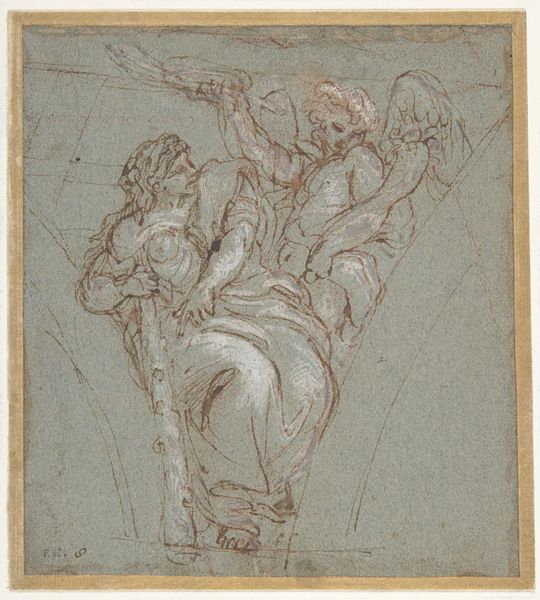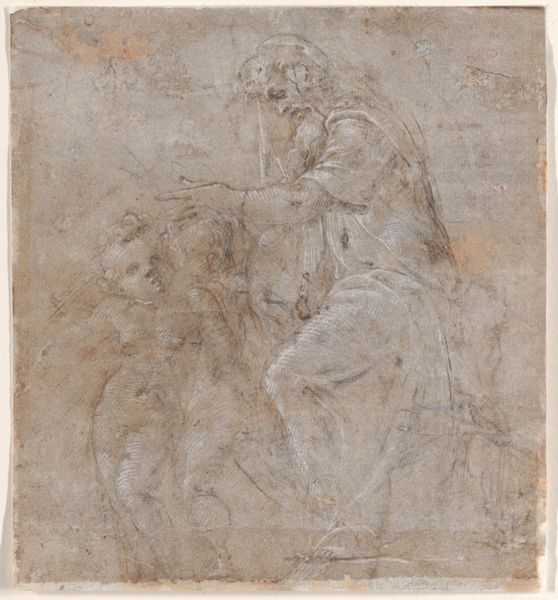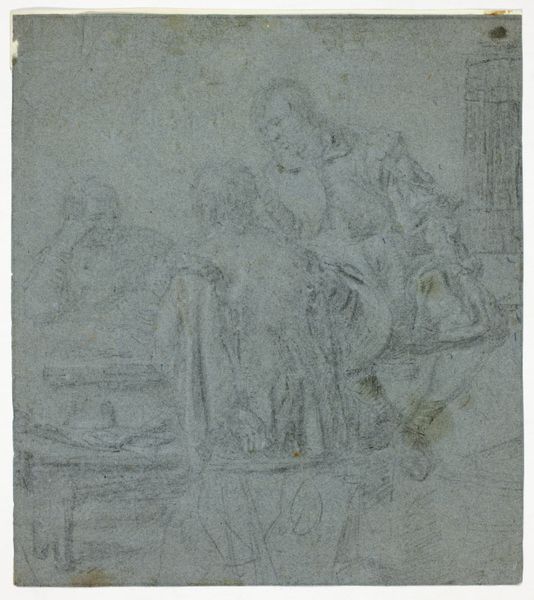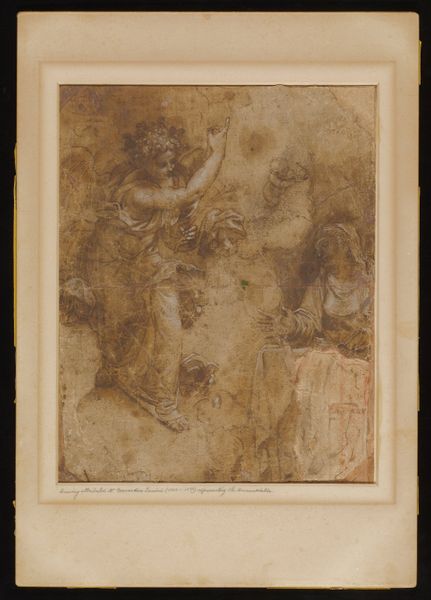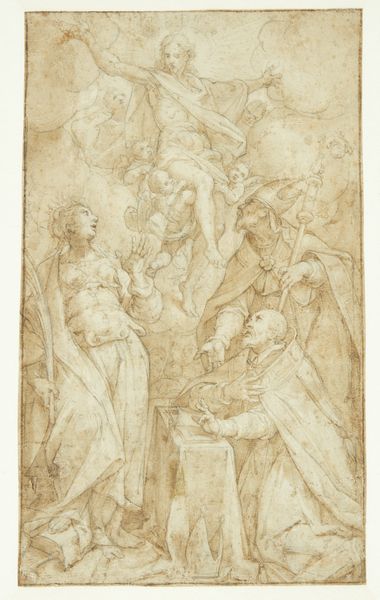
Dead Christ Supported by Holy Women and Angels n.d.
drawing, print, paper, ink, ink-drawings, graphite, pen
portrait
drawing
narrative-art
figuration
paper
11_renaissance
ink
ink-drawings
graphite
pen
history-painting
Dimensions: 140 × 100 mm
Copyright: Public Domain
Editor: This drawing, "Dead Christ Supported by Holy Women and Angels," attributed to the Circle of Lelio Orsi, is rendered in pen, ink, and graphite on paper. I find the use of materials really interesting, creating a sense of softness and fragility that really contrasts with the scene. How might we read this choice of media? Curator: Good observation. Let’s consider the material conditions under which such a work was produced. Graphite, ink, paper – these weren't merely neutral tools, but commodities circulating within a specific economic system. How do the inherent properties of the medium – its cost, availability, and the labor required to transform them into art – shape its reception? Editor: So, the availability of these materials could suggest a wider access to art production perhaps? Curator: Precisely. Think about the accessibility of paper and ink versus, say, a large-scale oil painting. Was this work perhaps conceived not as a precious, unique object for an elite patron, but as something more easily reproducible, intended for wider dissemination, like a print? The linear quality enforced by pen and ink allows for transfer to woodblock or engraving with ease. Editor: That makes a lot of sense. So you're saying the choice of materials and their inherent possibilities is related to how the artwork would circulate and be consumed? Curator: Absolutely. Consider also the *social* labor involved in making this print possible, from the paper-maker to the printmaker, and even those involved in distributing it. All those individuals and resources needed! Where would this image likely be displayed or viewed? Who owned it? All this impacts meaning. Editor: It’s fascinating how the materials and production can change how we view the final product! Curator: Exactly! Shifting our focus from a singular artistic genius to the entire network of production and reception can offer completely new understandings of artworks such as these. Editor: Thanks, this has completely changed the way I look at older art, making me consider the conditions of production beyond simply the "artist's hand".
Comments
No comments
Be the first to comment and join the conversation on the ultimate creative platform.
